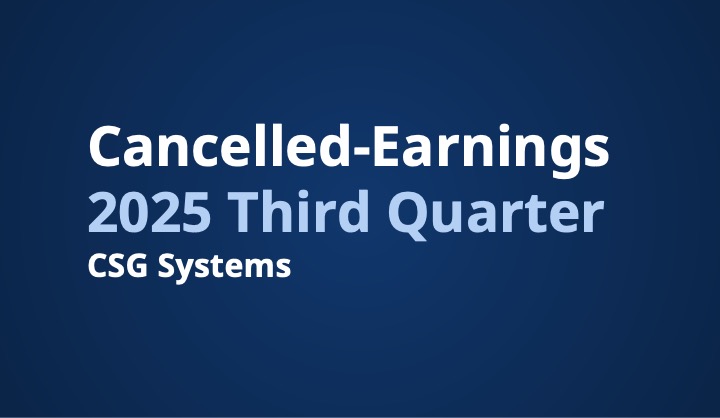Embedded SIM (eSIM) technology is reshaping how telecom businesses manage mobile connectivity. The shift from physical SIM cards to remotely programmable, digital profiles has made device onboarding, management and user experience more flexible and scalable. eSIMs simplify device provisioning, enable seamless network switching and support the growth of 5G applications.
The move to eSIMs impacts nearly every aspect of telecom operations—from consumer devices and Internet of Everything (IoT) endpoints to carrier infrastructure and customer support. With so many connections at stake, implementing strong security measures and complying with industry standards is essential for long-term success.
Understanding GSMA standards for eSIM
The Global System for Mobile Communications Association (GSMA) sets the standards for secure eSIM integration, management and operation worldwide. GSMA unites hundreds of mobile network operators, device makers and ecosystem players to maintain common specifications and ensure that eSIM technology remains interoperable, scalable and resistant to cyberthreats.
What is GSMA certification?
GSMA certification is a rigorous process that confirms an eSIM solution complies with stringent security, functionality and interoperability standards. This certification is built around a framework of specifications and accreditation programs, such as the Security Accreditation Scheme (SAS) and compliance with various architectural, technical and testing protocols. These technical benchmarks address everything from remote provisioning to secure key storage.
For telecom businesses, GSMA certification helps ensure that an eSIM product delivers strong encryption, profile management and data privacy. Solutions that pass this bar are eligible to receive digital certificates, enabling secure, authenticated communications between devices and carrier back-end systems.
GSMA certification applies to all eSIM entities, including embedded Universal Integrated Circuit Card (eUICC), Subscription Manager Data Preparation Plus (SM-DP+) servers and carrier provisioning systems. GSMA compliance provides a consistent security baseline across networks, regions and device types. It also supports legal and regulatory alignment with frameworks such as the General Data Protection Regulation (GDPR) and the Telecommunications (Security) Act.
Can eSims be hacked?
Every new technology creates opportunities and risks. While eSIMs are more physically secure than traditional SIMs, eSIM security risks are a serious concern for many telecom businesses. Understanding the threat landscape allows you to anticipate challenges and take proactive steps to protect your consumers.

Some of the most common eSIM security threats include:
- SIM swap attacks: Swap attacks, also known as SIM card spoofing, occur when attackers convince a carrier to transfer a user’s phone number to a new SIM or eSIM. eSIM swapping lets criminals intercept calls and messages, and potentially gain access to sensitive accounts through SMS-based authentication. Although eSIMs eliminate physical theft, fraudsters may still use social engineering to manipulate carrier support channels.
- eSIM scams: One of the fastest-growing threats involves eSIM scams, where bad actors distribute fake eSIM QR codes. Instead of a legitimate eSIM profile, these codes install malware or reroute user data, opening the door for identity theft or financial fraud. This threat is especially relevant for international travelers and those seeking quick eSIM activations online.
- eSIM hacking: Cybercriminals frequently exploit malware and phishing schemes—often called eSIM hacking—to gain unauthorized access to eSIM profiles. When unsuspecting users click on malicious links, they risk compromising their eSIM credentials.
- Man-in-the-middle (MITM) attacks: MITM attacks pose another risk, especially during remote provisioning or when using unsecured public Wi-Fi. Attackers may intercept data transmissions, steal credentials or attempt unauthorized changes to an eSIM profile. The risk is higher for devices without up-to-date security patches. End-to-end encryption of provisioning channels and continuous monitoring of network traffic are crucial defenses against such attacks.
- Carrier system vulnerabilities: If attackers compromise a carrier’s back-end or provisioning systems, they may gain access to large volumes of consumer eSIM data, initiate fraudulent activations or disrupt service. Even with GSMA standards in place, continuous security monitoring is necessary.
Why eSIM security is critical for your business
A compromised eSIM infrastructure can lead to:
- Loss of consumer trust and brand reputation
- Exposure to compliance violations and penalties
- Increased operational costs due to fraud resolution and account recovery
- Interruption of enterprise or IoT services
Best practices for ensuring GSMA compliance and eSIM security
Staying ahead of evolving threats and meeting industry standards is an ongoing process that requires proactive risk management, infrastructure alignment and clear internal policies. The following best practices can help you remain compliant and secure:
- Implement strong authentication: Use multifactor authentication and strong, unique credentials for all carrier and subscriber accounts.
- Centralize and automate provisioning: Rely on GSMA-certified software-as-a-service (SaaS) solutions for automated eSIM provisioning, activation and life cycle management. These solutions help reduce manual errors and make monitoring easier.
- Conduct regular security audits: Schedule ongoing, independent audits of your eSIM infrastructure, including back-end systems and third-party integrations, to catch vulnerabilities before they become threats.
- Monitor for threats and anomalies: Use real-time monitoring tools to detect and respond to suspicious activity, such as repeated SIM swap attempts, unauthorized provisioning or unusual account changes.
- Educate staff and consumers: Train employees to recognize phishing and social engineering tactics, and guide consumers on securing their accounts and devices.
- Segment networks and enforce policies: Isolate critical eSIM systems from other network assets and enforce strict access controls and security policies to limit exposure and lateral movement.
- Update and patch management: Regularly update all systems, software and firmware to protect against known vulnerabilities.
- Strict endpoint management: Secure devices and infrastructure through rigorous endpoint protection measures and access management controls.
How SaaS solutions enable secure eSIM management
SaaS platforms are transforming how telecom businesses manage eSIM provisioning, activation and security. A centralized cloud-based solution streamlines complex processes and enables telecom operators to maintain full control while meeting strict GSMA standards for compliance and security.
Well-designed SaaS-based eSIM management solutions provide centralized remote provisioning, allowing admins to deploy, activate and manage eSIM profiles across all devices without relying on manual transfers or on-site interventions. Centralizing these processes reduces provisioning errors and helps prevent unauthorized activations.
Through an Entitlement SaaS model, even smaller carriers can gain instant access to enhanced mobile features, such as VoLTE, 5G data management, Rich Communication Services (RCS) and device authentication, which are essential for a high-quality digital experience.
With these platforms, integration can take weeks, not months, and requires only minimal in-house development. Fast integration enables Mobile Network Operators (MNOs) and Mobile Virtual Network Operators (MVNOs) to stay ahead of new device releases and evolving consumer expectations. Modern SaaS solutions can also adapt to growing or fluctuating demand without additional hardware or complex network changes.
Secure your telecom operations with CSG’s Entitlements-as-a-Service solution
The rise of eSIM technology brings exciting opportunities and significant challenges for telecom businesses. Success depends on how quickly and securely you can adapt. CSG’s Entitlement-as-a-Service (EaaS) solution for telecom businesses seeking reliable eSIM management offers an innovative option. Powered by NetLync, CSG’s EaaS ensures secure, efficient and rapid deployment of eSIM functionalities across iOS, Android and IoT devices. This GSMA-compliant platform offers ISO 27001-certified infrastructure with regular independent testing and developer-friendly integration in just a few weeks.
It provides one-click eSIM transfers, eliminates reliance on SMS-based activation and instantly grants access to advanced features such as VoLTE and Wi-FI calling. With CSG’s EaaS, telecom businesses can future-proof operations by instantly deploying new OEM features upon release, significantly reducing time to market. The solution’s pay-as-you-grow pricing model removes upfront costs and minimizes risk, making it accessible for telecom operators of any scale.
Even if you already have an entitlement server, CSG’s solution supports parallel deployment. Consequently, you can enable next-gen capabilities like eSIM Quick Transfer and RCS without disrupting existing workflows.
Discover how Entitlements-as-a-Service can transform your eSIM management and security










